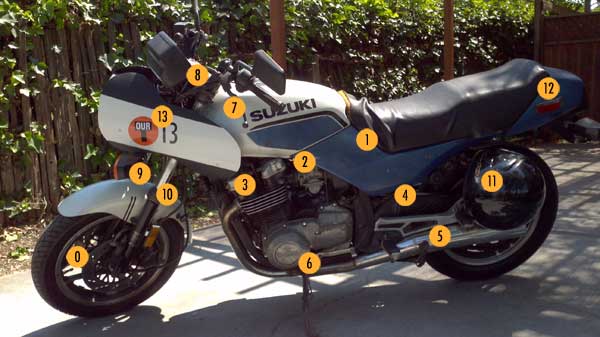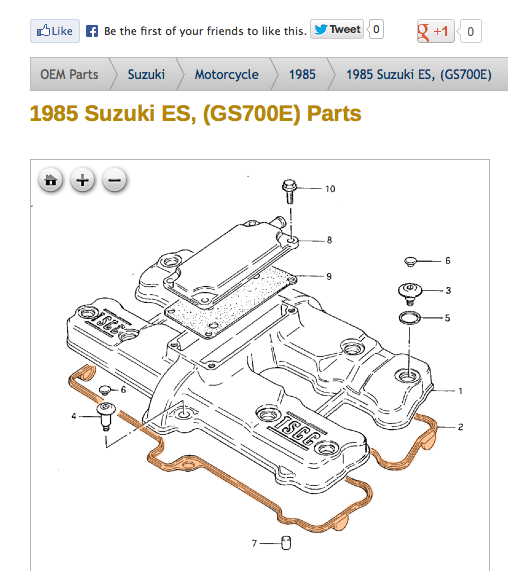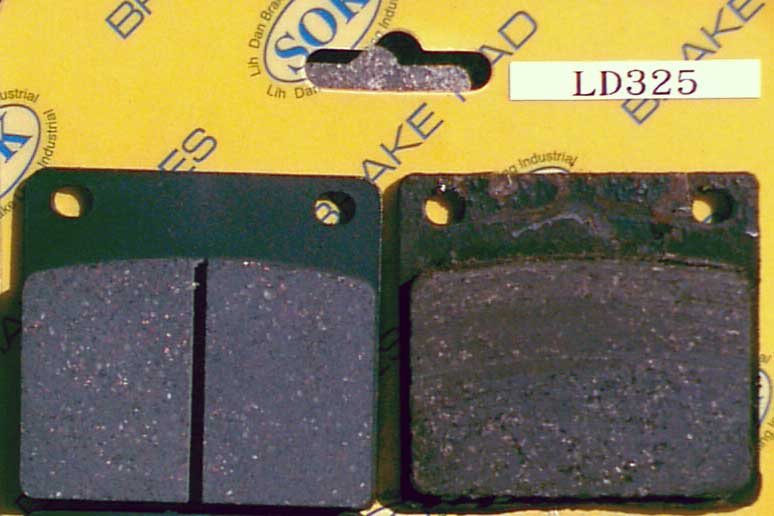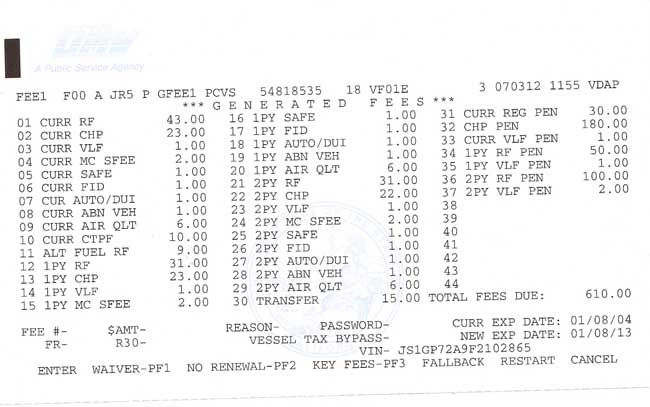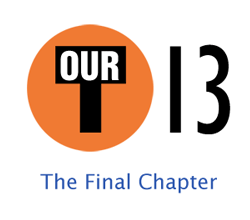 Premonitions and warnings about riding a motorcycle would have me posthumously writing this blog. Concerned family and friends made an effort to inform me of the dangers of a “donor cycle.” Listening to their assessments, I gained an understanding of the fantastic properties that make motorcycles so lethal: they are at once highly magnetic and invisible.
Premonitions and warnings about riding a motorcycle would have me posthumously writing this blog. Concerned family and friends made an effort to inform me of the dangers of a “donor cycle.” Listening to their assessments, I gained an understanding of the fantastic properties that make motorcycles so lethal: they are at once highly magnetic and invisible.
In one story after the next, the bike’s power of attraction was described causing cars, trucks, pedestrians, road debris and even potholes to find themselves drawn to the front of it – in its path of travel. It seemed a sheer certainty that I would be hit by something if I rode the motorcycle.
The second property was as dangerous and disconcerting as the first: no one would see me riding the bike. I was told the cloaking would be such that caused responsible drivers to dart in front of me, unaware of my presence. I began to understand the responsibility that came with this awesome power. I would use the bike for good, I thought.
Fortunately, my experiences on the 1,000 mile round-trip from rural New York to Massachusetts and Rhode Island were largely positive. In this post, the final chapter of Tour 13, I’ll recount the highlights of my trek and introduce my friends.
Deliverance: Better Late Than Never
My motorcycle finally arrived on the evening of August 10. Prior to delivery, I’d texted Chris, the shipper, for updates. I explained that my vacation was ending and the window of opportunity to complete my tour was closing. He was responsive to my inquiries, but could only travel so fast and was delivering his cargo in a logical progression of stops. He delivered at 10PM on Saturday, making a special effort so I would be able to start my trip the next morning. He was apologetic and explained that a mechanical failure caused a 3-day delay which cascaded to become a larger deficit due to missing weekday pick-up and delivery targets requiring him to wait over weekends.
Chris used mobile broadband to enable his tablet computer to serve as a communication platform and route planner. His brother was the second driver at the delivery. The bikes were well-packed and handled well. Chris mentioned that he had enough shipments to fill his trailer for the return trip. He was doing the work day after day. He looked forward to spending some time at home to unpack more after a recent move from Tennessee to Texas. Thanks again Chris.
Dollars and Sense alert: I debated whether I should ask Chris for a partial refund, considering he missed the target delivery date on my uShip.com auction item. Regardless of the binding terms of the agreement, which I didn’t care to explore, I considered the realities of the transportation business (fuel charges, tolls, labor) and decided to provide Chris an ‘opt-in’ choice. I gave him a inkjet-printed business card with the Tour 13 logo and the URL to “buy me a virtual beer” I said. Whether the concept even registered with him or he wasn’t interested or lost the card, I don’t know as he isn’t on my contributor list (yet?). Completing the delivery, he expressed I could consider him a friend in the motorcycle business. The transaction was personal. The delivery was recorded at uShip.com, triggering my eligibility for a $25 rebate. It was relatively simple to print the online rebate form and send it via snail mail to Rebate Promotion Department, 205 Brazos Street, Austin, TX 78701 (I mention the address to remind myself of the real people in real places that supported the process.) A $25 PayPal payment was made to my account. The onshore processing of my rebate form was almost immediate (allowing time for the USPS). A far cry from the 4-6 weeks typical of manufacturer, etc. rebates.
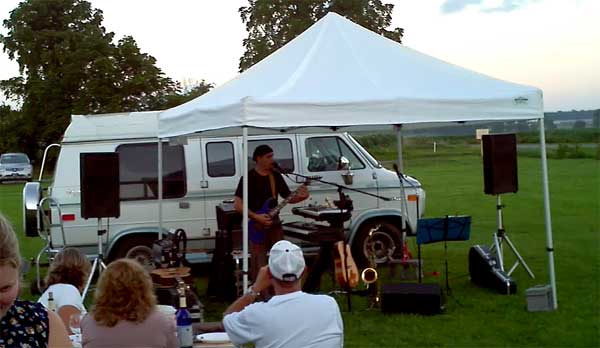 In hindsight, my delayed tour departure turned out to be a good thing. I spent the last four days of my vacation on the road. There were family events in the previous week I wouldn’t have been able to attend. My brother Joe and his wife Karen are a duo among their bands. I watched their performance at the King Ferry winery (in the photo Joe closes the gig with “Stuck in Lodi Again” ). The shifted tour dates allowed me to visit friends who were unavailable the previous week. The weather was clear for the most part. It was fortunate that my planned departure date gave me the time I needed.
In hindsight, my delayed tour departure turned out to be a good thing. I spent the last four days of my vacation on the road. There were family events in the previous week I wouldn’t have been able to attend. My brother Joe and his wife Karen are a duo among their bands. I watched their performance at the King Ferry winery (in the photo Joe closes the gig with “Stuck in Lodi Again” ). The shifted tour dates allowed me to visit friends who were unavailable the previous week. The weather was clear for the most part. It was fortunate that my planned departure date gave me the time I needed.
Nuance alert: The power of serendipity should not be underestimated. There is an intelligence to self-assembly. My trip schedule was not self-assembled insofar as I was involved in an ongoing dialog with my friends via e-mail and phone, but the solution was evident at each point due to the constraints that presented themselves. Eventually, I had no choice of the dates I’d be riding, since they were the last possible days I could complete the tour. With known dates, I set off with two of my three overnight locations known.
Onward Ho, Hey
Wallet. Check. Phone. Check. Underwear. Check Web Server. Life is about staying out of the path of your own wheels. What happens to the momentum of wheels already set in motion? Was I committed to the ride? I wasn’t questioning what could happen, it was the next step. Considering what could happen to each of us at any time, it’s amazing any of us gets on the freeway of life with our bouts of distraction and daydreams, and careless drivers among us.
I rose early on Sunday, August 11. The weather was sunny and mild. The dew was thick on the grass. It was quiet. Rural quiet is the same as rural dark, there is an absolute quality to them. In urban areas, there’s a perpetual din of traffic and other sounds. You may become accustomed to it to the point of not noticing, but it’s there. When you visit an area with space and sheer stillness, the silence is deafening. The nights without moonlight are black, with no street lamps or light diffusing into the sky from nearby cities.
My mother Dorothy provided a hearty breakfast including fresh eggs and kefir made from a local farmer’s milk. The harvest bounty is full of fresh vegetables. Gardens are always planted to provide food. I have to mention my mom. And my dad. I can start to thank them for the sacrifices of parenting.
While my trip was still ahead of me, I realized the tour had already started. I was with my family. My siblings are my first team, my first collaborators. They are hard-working and helpful. They have a diverse set of perspectives and abilities. They’ve taught me a lot.
 Steve and Joe are older brothers (shown at right). I won’t even try to explain who they are or what they ‘do’. My brother Steve (in tie) doesn’t have a LinkedIn profile and a congregation is his idea of a chat room. He’s a welder at his blue collar job. At home Steve’s a farmer, builder and inventor. Joe is a musician with a 10-piece band who also raises grass-fed beef. Joe and I continue to collaborate for the brotherly bond and the dream. I serve a website for his band The Destination and we produced the Blue Collar Man video with his original song. Other brothers to be mentioned: Mike, Tom and Ed. My sister Anne, sadly, was only there in our memories.
Steve and Joe are older brothers (shown at right). I won’t even try to explain who they are or what they ‘do’. My brother Steve (in tie) doesn’t have a LinkedIn profile and a congregation is his idea of a chat room. He’s a welder at his blue collar job. At home Steve’s a farmer, builder and inventor. Joe is a musician with a 10-piece band who also raises grass-fed beef. Joe and I continue to collaborate for the brotherly bond and the dream. I serve a website for his band The Destination and we produced the Blue Collar Man video with his original song. Other brothers to be mentioned: Mike, Tom and Ed. My sister Anne, sadly, was only there in our memories.
I began my ride at 9 AM on Sunday, August 11. The gas in the tank barely registered on the gauge. It was what remained of the gallon I’d added in California to test the bike. I rode down the hill to fill up at the Pit Stop in Genoa. It was my first fill of the tank. I topped it off for $15. The bike started well. I was confident that it was up for the tour. It had been over nine years since it burned a tank of gas and I was excited about turning the fuel into combustion into rotation into forward motion.
 I set off to see Randy in Aurora, a local village with a small college and spectacular lakefront property. (He rents next to the house in the background.) Randy has a day job that provides for his two daughters, but not his personal expression. He’s writing a novel and posts humorous content regularly to his Facebook site “Strange WOOD: The Ruminations of Randall Hess”. Randy is a well-read student of literature. Imagination is one of his assets. He gives form to his tragi-comical thoughts. He shares the angst of playing a role without the benefit of a script. The show must go on, but who is writing it? This is a shout-out to Randy. A blue-collar, white-collar man with a kind heart and a profound existence. He’s contributed to my life by being who he is. Thanks for collaborating. Welcome onboard.
I set off to see Randy in Aurora, a local village with a small college and spectacular lakefront property. (He rents next to the house in the background.) Randy has a day job that provides for his two daughters, but not his personal expression. He’s writing a novel and posts humorous content regularly to his Facebook site “Strange WOOD: The Ruminations of Randall Hess”. Randy is a well-read student of literature. Imagination is one of his assets. He gives form to his tragi-comical thoughts. He shares the angst of playing a role without the benefit of a script. The show must go on, but who is writing it? This is a shout-out to Randy. A blue-collar, white-collar man with a kind heart and a profound existence. He’s contributed to my life by being who he is. Thanks for collaborating. Welcome onboard.
I Would Ride 1,000 Miles. . .To Be Back At My Door?
I left Aurora on Route 90 through Locke to Homer. I then took sleepy Interstate 81 North to Route 20. Route 20 was my route to Albany. It was Sunday and traffic on Upstate NY roads was not intense. 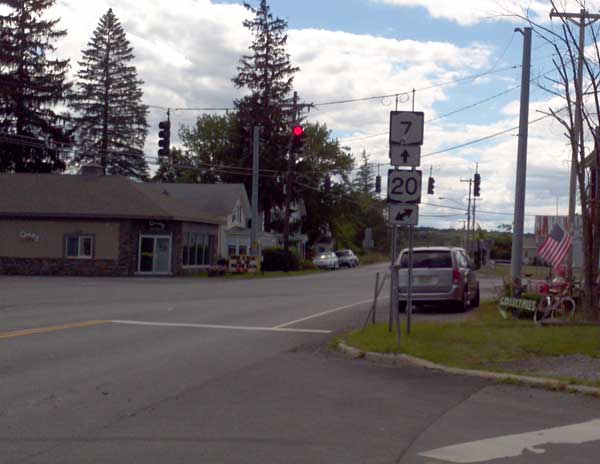 Local/regional “blue” highways connect directly to the main thoroughfares of small villages. If you’re not in a hurry, it’s a refreshing change of pace to ride down these Main Streets (at the village speed limit) seeing the storefronts from the seat of a motorcycle.
Local/regional “blue” highways connect directly to the main thoroughfares of small villages. If you’re not in a hurry, it’s a refreshing change of pace to ride down these Main Streets (at the village speed limit) seeing the storefronts from the seat of a motorcycle.
I wasn’t in a hurry. The day was clear and it was comfortable riding. I passed numerous other riders enjoying the same thing. I belonged to the club and waved in solidarity with them. When I found myself approaching the suburbs of Albany at 3 PM, I phoned Herb to discuss my arrival. He convinced me that I needed to pick up the pace to drive across Massachusetts before nightfall. That meant only one thing: use the NYS Thruway and Mass Pike, riding on Interstate 90 for over four hours.
The Interstate had none of the relaxed, journey-is-the-reward feeling of traveling the blue highways. I was on the road to go fast without stopping, deliberately or otherwise. The cruising speed was typical of the other Interstates I would ride on the tour: 70-75 MPH with bursts to 80 MPH overtaking trucks. At these speeds, there wasn’t much point in considering a failure. I had faith in the bike’s tires and mechanical integrity, the road conditions, other drivers and my ridership.
When in MA, Do as the CA-ns Do
What are rules, really? Are posted speed limits merely suggestions when so many drivers exceed them regularly? While I don’t make a habit of being reckless, I recognize there are many instances where you can be safe while breaking the law. The law sets targets. Targets have tolerances. In the instances where laws merely provide convenience rather than a substantial correction for dangerous or destructive behavior, there is less basis for them. Imagine bending or breaking Byzantine codes that are not reasonable or appropriate. You take a calculated risk and prepare to deal with the consequences, if any.
At several points on the Eastbound Mass Pike I encountered bumper-to-bumper traffic. The traffic slowed to a crawl and I could see a long line of cars ahead. I considered the advantage of splitting lanes with my motorcycle. This IS legal, right? Not exactly. In California, where my license is issued, it is legal to split lanes such that a motorcycle can ride beside a car in the same lane. I considered that a progressive state like MA would have the lane splitting law as well. I was in no position to Google the MA DMV, so I proceeded to enjoy the benefit of my blissful ignorance of the law. I was able to shave an hour or more of slow-moving traffic by bobbing and weaving between cars and trucks as I moved forward. It was a great feeling, though I can now imagine the stares of outrage and horror that pelted me from the bewildered drivers as I passed them. I didn’t look back.
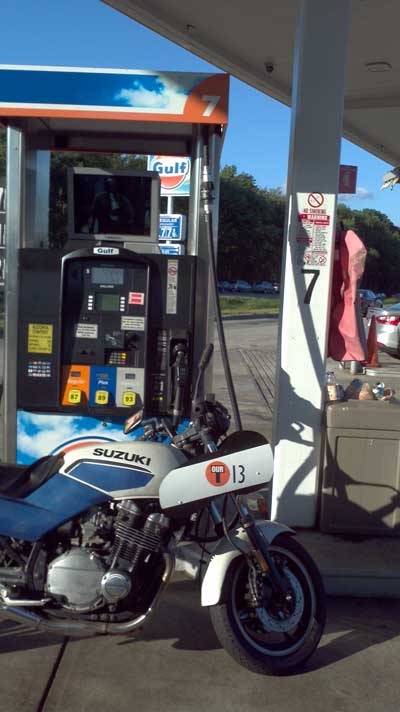 I reached the I95 interchange at about 7PM. Stoneham was close, I just had some late commuter traffic to contend with. I was able to make up for lost time in the previous two hours after refilling with fuel at the Blandford Service Area. Fuel was burning at the rate of a tank every 3-4 hours of riding. I leave enough
I reached the I95 interchange at about 7PM. Stoneham was close, I just had some late commuter traffic to contend with. I was able to make up for lost time in the previous two hours after refilling with fuel at the Blandford Service Area. Fuel was burning at the rate of a tank every 3-4 hours of riding. I leave enough 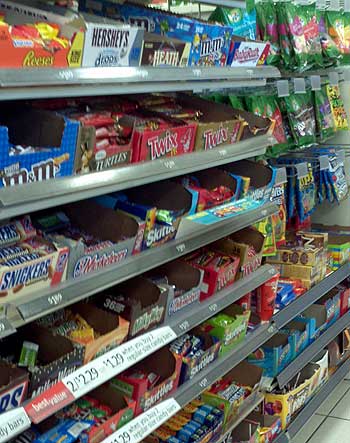 in the tank instead of being caught without it. I set the petcock to ‘RES’ and watch the gas gauge. The average fill is $11 – $15. Service Areas are motorist oases along tollways. I’m amazed at how our culture has evolved these gathering places, bristling with activity. There are so many exotic foods to sample, brightly packaged and heavily processed. No thanks, I’m just there for the fuel.
in the tank instead of being caught without it. I set the petcock to ‘RES’ and watch the gas gauge. The average fill is $11 – $15. Service Areas are motorist oases along tollways. I’m amazed at how our culture has evolved these gathering places, bristling with activity. There are so many exotic foods to sample, brightly packaged and heavily processed. No thanks, I’m just there for the fuel.
The homemade soup was worth the wait. I exited I95 at Stoneham around 7:30PM. In my navigation-dissociated moment, Herb came to meet me at a local shopping center and I followed him home. We picked up where we left off years ago as we sat on the deck, more mature as we are. The conversation about hopes, dreams and accomplishments. Reminiscences. Herb and Stephanie dance a tango lifestyle. The hearty chowder was a team effort. I found balanced appreciation and respect throughout their space. I was energized with familiarity and friendship as I enjoyed a special welcome.
On Monday morning, I was up with the couple for their workday. My five-star treatment continued with fresh-brewed coffee and breakfast cereal.  Herb was making lunch and would be taking the train to Suffolk University in Boston that morning, one of several variations on the theme of his work routine. (Herb is pictured in his commute attire at right – he transforms into Professor Ramy at the school.) Stephanie commutes to her job in IT (and occasionally a therapist) at a health care facility nearby. She doesn’t have the parking issues that Herb confronts. I was refreshed and ready to continue my journey. After Herb and Stephanie left, I spent an hour with my laptop using the wi-fi connection from the table on their deck – the epitome of a mobile office to respond to clients and continue to reach out to friends in the area.
Herb was making lunch and would be taking the train to Suffolk University in Boston that morning, one of several variations on the theme of his work routine. (Herb is pictured in his commute attire at right – he transforms into Professor Ramy at the school.) Stephanie commutes to her job in IT (and occasionally a therapist) at a health care facility nearby. She doesn’t have the parking issues that Herb confronts. I was refreshed and ready to continue my journey. After Herb and Stephanie left, I spent an hour with my laptop using the wi-fi connection from the table on their deck – the epitome of a mobile office to respond to clients and continue to reach out to friends in the area.
Nuance alert: Physical proximity opens a wireless network of information exchange between people. Call it what you will – body language, non-verbal communication, clairvoyance, vibe, intuition, hunch, feeling… Personal exchanges are much richer with some synchronization on a physical plane. Phone, e-mail and text exchanges are how we manage a multitude of modern relationships. These modes of communication cannot wholly substitute for the much more primitive physical connection.
Boston: More Than a Feeling
I rode into Boston a commuter, albeit a late morning one. I had planned one step: take I93 South to Boston into the “big dig” tunnel and exit somewhere in the city. I would end up near Chinatown with a sense of where I should go. Riding a motorcycle, that’s all I needed. Downtown streets weren’t busy. I rode in an available direction and spontaneously adjusted based on the available choices. On a meandering ride, the biggest concern is selecting a path that allows you to continue to meander. Unaware, you can select an on-ramp or other access point that commits you to traveling an undesired highway, bridge or tunnel until you can undo the choice by turning around at an exit.
I rode streets that were vaguely familiar. I quickly reached Boston Common, took Beacon Street to Kenmore Square and then Brookline Avenue to Fenway Park. I’ll admit I wasn’t looking at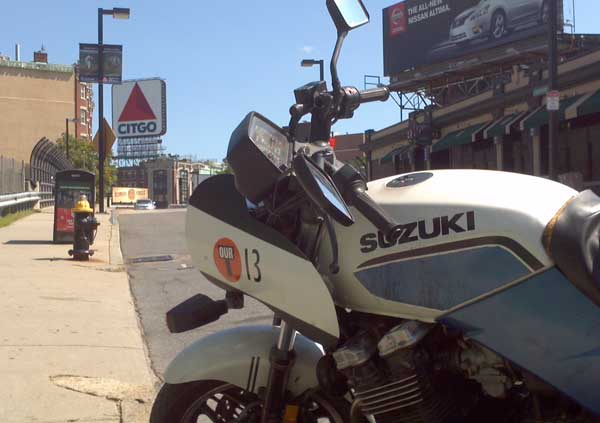 names so much as traveling in a trajectory, though I was familiar with Commonwealth Avenue. I’d lived on Commonwealth Avenue in the late 80s (“in a shoebox in the middle of the road” – Monty Python). Actually, a studio apartment only slightly larger than a shoebox.
names so much as traveling in a trajectory, though I was familiar with Commonwealth Avenue. I’d lived on Commonwealth Avenue in the late 80s (“in a shoebox in the middle of the road” – Monty Python). Actually, a studio apartment only slightly larger than a shoebox.
I rode to Cleveland Circle and found a gas station in the location I remembered, though the brand had changed. As I was fueling, another biker came roaring in. The roar was an on-bike stereo system blasting music of some metal or other heavy element. He refueled and rode up from the pump behind mine to make a bike owner’s introduction: comments on ridership and the vintage of my bike, showing solidarity. His cycle was a newer, more powerful Suzuki with a scuffed, bright green cowling. When Lawrence mentioned the top speed he’d ever ridden a bike, I pictured him traveling on his bike at 195MPH in a grip of sheer terror and exhilaration. Why do we possess this need for wresting survival from the throes of self-inflicted abuses? The “T” (Boston Transit) emblem on his shirt suggested his work was slightly less tolerant of an unrestrained pursuit of speed.
Continuing my ride, I discovered the Chestnut Hill Reservoir, a massive urban body of water that I was unfamiliar with, though I had commuted past it for years. It was a simple left turn from Commonwealth Avenue onto Chestnut Hill Driveway that I’d never even considered taking until I noticed it as an interesting entrance from a cyclist’s viewpoint. In juxtaposition to the urban landscape, the vista along the road was especially expansive. Rather than circumnavigating the reservoir, I turned around at the corner of Boston College on Beacon Street, retracing my path to take in the view a second time. Cloaking alert: The only instance of invisibility during the trip occurred as I was approaching the Chestnut Hill Driveway entrance. An SUV darted in front of me and I adjusted by moving into the other lane. There was no traffic and the lane was clear. It becomes a habit to ride defensively. The car always has the advantage in an accident.
I’d arranged for a late lunch with Chris, a friend and current client. She’d capped off a weekend in New Hampshire with a Monday morning client visit and would be back in Boston around 1:00. It was serendipitous that our schedules overlapped. Serendipity enabled by wireless communication. I needed to finish Boston siteseeing to continue my ride to Rhode Island after lunch. I failed in a quest to find my shoebox apartment. I couldn’t find familiar landmarks – the stores, building textures and landscapes were different. One thing had markedly changed: there was an absence of trees. Who doesn’t like trees? Apparently, an urban landscape concerned with simplified maintenance and liability over mitigated earth-island heat absorption and naturist preferences.
 I traveled back downtown for another photo op before meeting Chris at Steve’s Greek Cuisine at the corner of Hereford and Newbury Streets in Back Bay. I decided the Prudential building was sufficiently monumental and didn’t involve the complication of navigating around the impressive buildings of the financial district. (The photo, right, was taken at the corner of Ring Road and Route 9. It was a quick stop along the curb as no parking existed there.)
I traveled back downtown for another photo op before meeting Chris at Steve’s Greek Cuisine at the corner of Hereford and Newbury Streets in Back Bay. I decided the Prudential building was sufficiently monumental and didn’t involve the complication of navigating around the impressive buildings of the financial district. (The photo, right, was taken at the corner of Ring Road and Route 9. It was a quick stop along the curb as no parking existed there.)
Greek to Me
I’m not a foodie, but I can appreciate food. A gyro. I hadn’t eaten Greek cuisine for a while and I knew that I wanted one. Chris and I met through her older sister who I worked with when I lived in Boston.  Over the years and the distance, we’ve stayed in touch. In 2005, when Chris started Open The Door as a marketing and public relations professional, I helped with her website. Since then, she’s been steadily building her business and continues to use my hosting and e-mail services. Among other data transfer, I provide her an image upload and retrieval solution facilitating the distribution of PR images. It’s a modest, yet critical demand on my server.
Over the years and the distance, we’ve stayed in touch. In 2005, when Chris started Open The Door as a marketing and public relations professional, I helped with her website. Since then, she’s been steadily building her business and continues to use my hosting and e-mail services. Among other data transfer, I provide her an image upload and retrieval solution facilitating the distribution of PR images. It’s a modest, yet critical demand on my server.
The gyro was good. Chris was kind to claim the meal as her expense. Interpreting a map on her iPhone, we determined directions for the next leg of my journey. It started with I93 South and mid-afternoon traffic leaving Boston would be congested. No splitting lanes. Following simple directions from the restaurant to the on-ramp, I was on my way to Rhode Island. Thanks for the collaboration and support Chris. 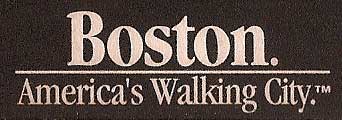 Geographical nuance alert: Greater Boston is very accessible. Built on a peninsula, the city has a center of gravity with large buildings giving way quickly to the Charles River, Boston Harbor and lower structures South and West. You can easily find your way around. Unique landmarks assist you in your orientation. It’s America’s Walking City™, not that the trademark makes it any more or less so.
Geographical nuance alert: Greater Boston is very accessible. Built on a peninsula, the city has a center of gravity with large buildings giving way quickly to the Charles River, Boston Harbor and lower structures South and West. You can easily find your way around. Unique landmarks assist you in your orientation. It’s America’s Walking City™, not that the trademark makes it any more or less so.
Traffic became considerably lighter when I reached the interchange. I would take I95 past Providence to Route 4 and then find a smaller road. . .I could consult my smartphone map again nearer the destination. The riding was more of the same, though I was feeling a commuter vibe. Urban Boston quickly changed to more rugged New England landscape. East coast highways cut through forests and hills. I imagined the difference in my trip and that of the drivers commuting home. I noticed the light of early evening. I smelled the ocean.
All States Are Not Created Equal
The eastern seaboard is incorporated into the borders of 14 states. The west coast (excl. Alaska) has a mere 3. The New England states are small and well-connected. The sizes make sense in historical context as they were the first to be settled by our forefathers necessitating smaller territories to self-govern using the existing modes of transportation and communication. As the U.S. grew westward, efficient, bureaucratic thinking shifted to define states as big boxes with long, straight lines.
State-hopping to Rhode Island was quick. In 2-1/2 hours, I’d traveled from Boston through Providence and was on Route 1 South. I realized I’d missed a turn to North Kingstown, when I began seeing signs for South Kingstown. I called Scott and found that he and his wife Cheryl had just docked in East Greenwich after sailing from Block Island. With Scott’s directions, I rode up Route 1 and found his home. The coastal communities I passed felt comfortable.
I met Scott in community college. We edited a newspaper together. After college, we parted ways for other schools and other lives. It took phone calls to his father and brother to find updated contact info for him.  From the outset of my visit, Scott and Cheryl made me feel welcome in their fine home. I was there for chicken wing night at the local pub. Scott was up early Tuesday with his young yellow Labrador, Scout, while Cheryl prepared for her workday as an interior designer for commercial space. I’d planned on leaving in the morning to ride home, but changed my mind after Scott advised me on current weather conditions. Since Scott sails, he is weather-minded by necessity. There’s nothing fun about sailing in a storm. A sage piece of advice on motorcycles: do not ride in the rain. The animation of current local conditions at accuweather.com (Scott’s choice) showed a storm intersecting my route for most of the morning. I abandoned the idea of reaching Central NY that day. I was able to sync new plans with my friend Bill, who had offered me a place to stay earlier, among the original tour dates. Scott hadn’t yet started a new job as an account executive at a microscopy company, so we had time together and met Cheryl for lunch. After lunch, the storm passing, I was prepared for my ride to Groton, MA.
From the outset of my visit, Scott and Cheryl made me feel welcome in their fine home. I was there for chicken wing night at the local pub. Scott was up early Tuesday with his young yellow Labrador, Scout, while Cheryl prepared for her workday as an interior designer for commercial space. I’d planned on leaving in the morning to ride home, but changed my mind after Scott advised me on current weather conditions. Since Scott sails, he is weather-minded by necessity. There’s nothing fun about sailing in a storm. A sage piece of advice on motorcycles: do not ride in the rain. The animation of current local conditions at accuweather.com (Scott’s choice) showed a storm intersecting my route for most of the morning. I abandoned the idea of reaching Central NY that day. I was able to sync new plans with my friend Bill, who had offered me a place to stay earlier, among the original tour dates. Scott hadn’t yet started a new job as an account executive at a microscopy company, so we had time together and met Cheryl for lunch. After lunch, the storm passing, I was prepared for my ride to Groton, MA.
Scott and Cheryl are do-it-yourselfers. They add tangible and transcendental value to their lives through sweat equity. By no means limited to Yankees, there is an ingenuity required of rugged lifestyles in rugged climates. Rugged can also be the terrain of self-determination. The human condition manifests itself in many dimensions and depths. Visiting Scott and Cheryl illuminated my perspective. They comprise years of experiences different than mine. I’m fortunate to consider them resources in my life. Scott’s advice on dogs: Keep dogs in pairs, they will “play” with each other, rather than the furniture cushions, clothes, etc. The couple’s second dog is an older chocolate Labrador named Cayden. I experienced Scout playing roughly with Cayden, annoying the senior dog. The snipping and barking directed at the “father” was modulated and returned as an occasional, loud groan of frustration. This is energy all young dogs and children have.
All Systems No: Failure to Shunt
Diverting briefly, I will reveal that the system I installed to charge my cell phone and iPod using the motorcycle battery was not working. I was using my cell phone regularly and it reached a low charge capacity that was not being replenished by the lighter adapter.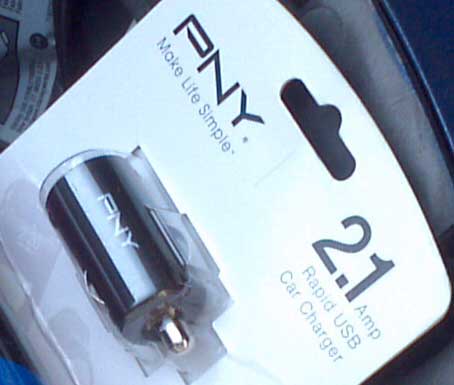 It didn’t appear the adapter was providing the 2.1A of current as specified. I normally charge the phone using a Rhino 2A USB lighter adapter without a problem. I also discovered that my laptop USB port did not provide the required current. I ended up charging my devices via friends’ USB power sources. The output of USB power supplies varies and the charge indicator on a device may be misleading. I resorted to powering up Bill’s desktop computer to charge my phone and iPod, even though the phone had been “charging” overnight using a wall adapter.
It didn’t appear the adapter was providing the 2.1A of current as specified. I normally charge the phone using a Rhino 2A USB lighter adapter without a problem. I also discovered that my laptop USB port did not provide the required current. I ended up charging my devices via friends’ USB power sources. The output of USB power supplies varies and the charge indicator on a device may be misleading. I resorted to powering up Bill’s desktop computer to charge my phone and iPod, even though the phone had been “charging” overnight using a wall adapter.
Au to Groton
Riding in the afternoon on the outer ring was easy going. I was set to be at Bill’s in time for cocktail hour. I arrived to one of the usual greetings and had a tour. Bill was rightfully proud of his property. Well maintained with German discipline. We went for a swim in his immaculate pool. Amy was a consummate host. They provided me a fine meal and fine bed. In his tree-rich community with large parcels, there was no danger of upsetting the neighbors with our Ping Pong grudge match in the garage. I must concede defeat at the jaws of Bill’s steely serves and saves. I felt at home when Bill remembered my visit with Sophie and Christian many years prior. The homestead had changed, but in a well-managed way. The important details were the same: family, diligence, sharing. Bill is in a state of limbo between jobs. He was severed from Motorola after the Google acquisition. He was managing developers in a networking division. Now he’s making progress on home improvement lists. The ability to work with construction materials is a skill you don’t see on a tech resume, but it is fundamental to maintaining a house.
We went for a swim in his immaculate pool. Amy was a consummate host. They provided me a fine meal and fine bed. In his tree-rich community with large parcels, there was no danger of upsetting the neighbors with our Ping Pong grudge match in the garage. I must concede defeat at the jaws of Bill’s steely serves and saves. I felt at home when Bill remembered my visit with Sophie and Christian many years prior. The homestead had changed, but in a well-managed way. The important details were the same: family, diligence, sharing. Bill is in a state of limbo between jobs. He was severed from Motorola after the Google acquisition. He was managing developers in a networking division. Now he’s making progress on home improvement lists. The ability to work with construction materials is a skill you don’t see on a tech resume, but it is fundamental to maintaining a house.
Another morning routine. Amy was off to the beach with Caroline and William, their children. Jillian wasn’t going. Bill was looking forward to working on his windows. I appreciated Bill anticipating my need for gas and giving me directions to the cheapest local station. I would have been aimlessly looking for one. After some fresh coffee, I was ready to get home. I had a long trip ahead – I’d be on various Interstates for six hours. The plan was I495S to I290, which would take me through Worcester. The Mass Pike/NYS Thruway would then unfold toward Weedsport.
The day was clear with scattered clouds. The weather wasn’t threatening. I wasn’t considering the forecast partially because I had no choice, my flight to California was leaving at 7:45 that evening from Syracuse. There was a necessity to move myself 350 miles on the bike. I was refreshed and focused as I took the on-ramp. Getting in the zone meant balancing the exhilaration of the act of propulsion with the technical calculations of traffic responses, changes in conditions, etc. The zone is a busy one that distorts the feeling of time lapsing. It’s continuous work. The long ride remained fresh with my enthusiasm buoyed by its novelty.
I’ve traversed many more miles in 4-wheeled vehicles for good reason. I encountered wind sheer near Albany. Ideally, we travel with the wind at our backs, gently pushing us along. With a headwind, there is a resistance pushing us back, requiring more force to push into it, but with some control. When strong winds pushed perpendicular to my direction of travel, I compensated by maintaining my trajectory firmly, leaning the bike into the wind to help course corrections. The bike undulated as a result of wind gusts and reflex responses. It’s a little unnerving to feel yourself being blown into a neighboring lane, much like the feeling of passing a large truck.
Country Roads
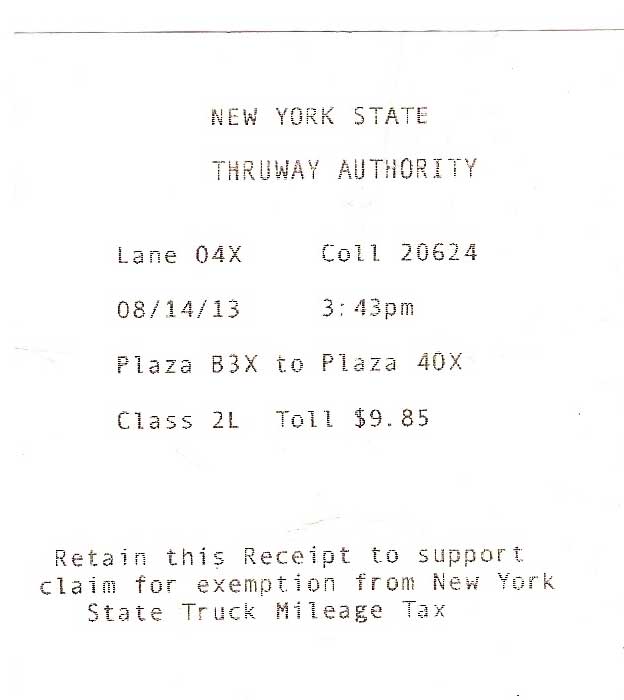 The exit for Weedsport was a welcome sight. I approached this toll booth as the others, anticipating a transition. The motorcycle didn’t idle well. The complexity of taking the ticket out of my pocket and paying the toll was increased by the necessity to hold the throttle to keep the engine running. The wallet in my right jeans pocket and ticket in left jacket pocket. Right hand, then left hand crossing over to the throttle as I handled the money. The engine stalled. No line, no rush. It started easily as it had throughout the trip. I was back on the blue highways. The end of the tour was near.
The exit for Weedsport was a welcome sight. I approached this toll booth as the others, anticipating a transition. The motorcycle didn’t idle well. The complexity of taking the ticket out of my pocket and paying the toll was increased by the necessity to hold the throttle to keep the engine running. The wallet in my right jeans pocket and ticket in left jacket pocket. Right hand, then left hand crossing over to the throttle as I handled the money. The engine stalled. No line, no rush. It started easily as it had throughout the trip. I was back on the blue highways. The end of the tour was near.
Route 34 was a straight shot from Weedsport, through Auburn, to home. I was riding on a well-worn path of my youth, my destination roughly equidistant between Auburn and Ithaca. I’ve been in both cities numerous times. Auburn is a second-city to Ithaca. The cities are distinctly blue- and white-collar, respectively. Ithaca is home to Cornell Unversity. 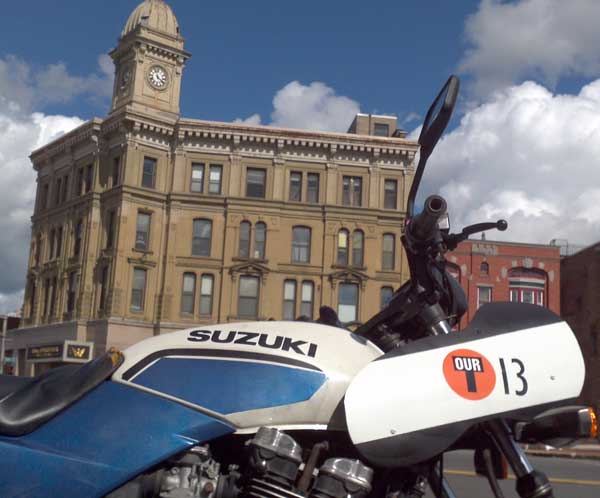 Auburn is home to a correctional facility. I attended Cayuga Community College in Auburn. Curley’s, one of the watering holes frequented with friends during college, stood near the southeast corner of the prison. Not that Auburn is a prison town, some areas are majestic, but the influence can be felt. Parts of the city are a mixture of industrial and light-industrial businesses and services with a working-class aura. As I eluded to in my last blog post considering the Auburn DMV (“DMVNY: To Protest and be Served“), lifestyles, perceptions and attitudes have geographical underpinnings.
Auburn is home to a correctional facility. I attended Cayuga Community College in Auburn. Curley’s, one of the watering holes frequented with friends during college, stood near the southeast corner of the prison. Not that Auburn is a prison town, some areas are majestic, but the influence can be felt. Parts of the city are a mixture of industrial and light-industrial businesses and services with a working-class aura. As I eluded to in my last blog post considering the Auburn DMV (“DMVNY: To Protest and be Served“), lifestyles, perceptions and attitudes have geographical underpinnings.

Final Odometer Reading
I’d reached the Weedsport toll booth at 3:43PM with roughly an hour left to travel. I had a comfortable window to make it home and return to Syracuse for my flight. I traveled light, so packing my luggage wouldn’t require much time. The stress accumulated on the Interstate melted away in the final miles of the ride. A hearty meal prepared by my mother awaited. A series of goodbyes and a car trip later, I was flying out of Syracuse John Hancock International Airport in the evening twilight. A connecting United flight from Washington Dulles to San Francisco and I would be in California after midnight.
Sophie welcomed me home after two weeks. I’d left her school-year preparations to juggle alone and she was due some help. Steffan started his sophomore year in high school the day I returned. Our oldest son, Christian, was settled in at UC Davis thanks to his mother. Aidan is still enjoying some vacation before beginning classes at Foothill College later this month. I’ve been partners with Sophie for 20 years. She has been an inspiration for growth. The fires of love and respect require continuous attention. Repairing neglect involves stoking and warming the hearth.
Why the Tour?
I’m approaching an age where I will have lived half of my life in California. The “second half” of my life has been a different journey than the first. I’ve been fortunate to become a husband, a father, a resident of Palo Alto. The tour was a connection to the first “half” of my life, a resident of NJ, NY, PA, NH and MA. It was primarily an excuse to take serendipitous steps toward a shifting goal that I chose to document. The reason you’re reading this is as much the reason I’m writing it. If we can connect to each other with a simple touch of a key, why can’t we find so much more utility in our exchanges. My sharing and collaboration site is collab.us – I invite you to join.
I hope that the wisdom I’ve gained is greater than that I’ve lost. We all have compartments in our lives, whether separated physically or psychically we change frameworks as we navigate and invent meanings and associations.
I believe in the power of making connections. Familiarity is the currency of networking. I’m not an exhibitionist – wallowing in the mundane details of my life is not my motivation. I’m all for sharing in others successes, but not TMI. Consider these reflections a thoughtful digest, not an unedited stream. You pick your channel. Tune into your own.


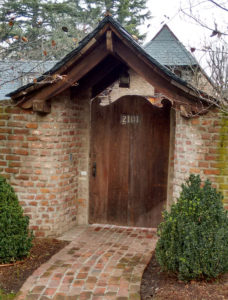
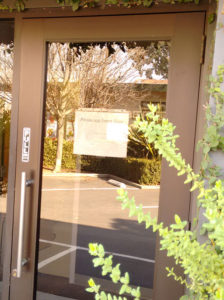
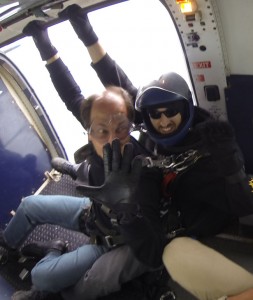




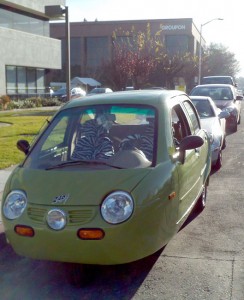
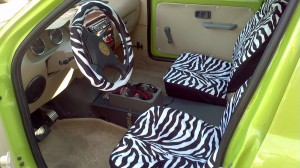

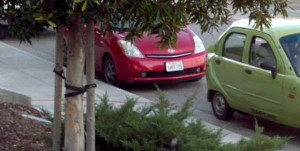
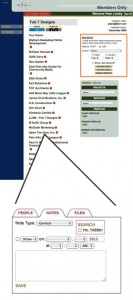
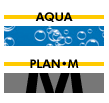

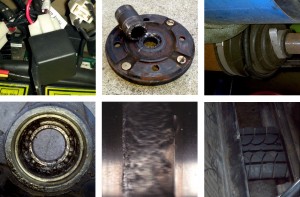
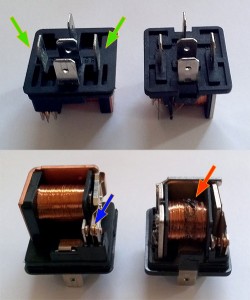
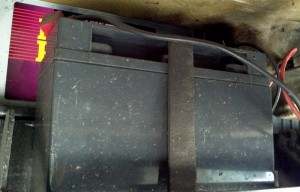

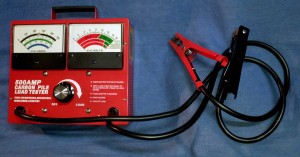

























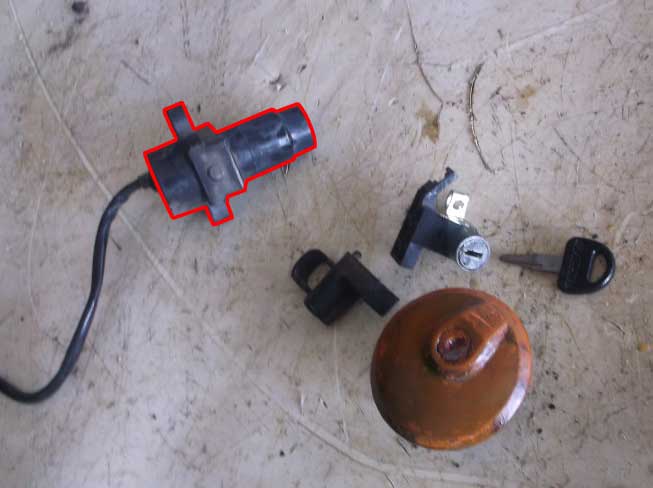


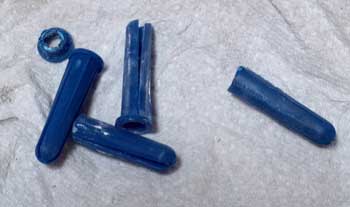



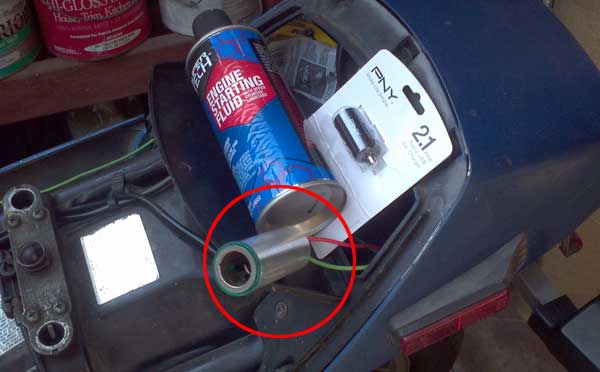
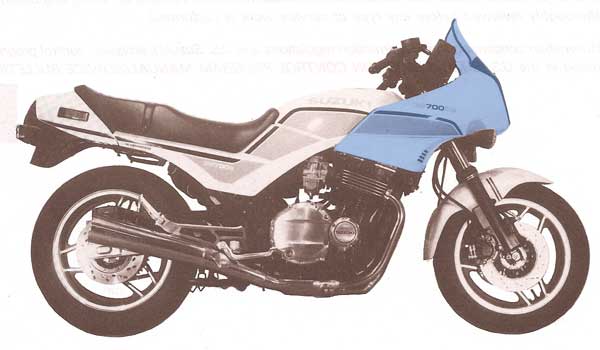
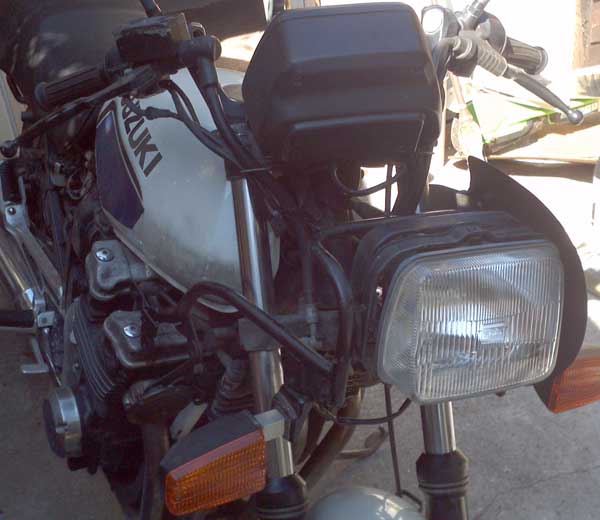




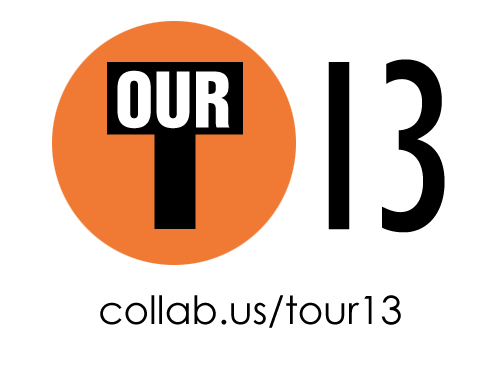 A motorcycle tour would have been impossible for me without the existence of a reason for a quarter of a ton of metal to be in my possession in the form of a device with the singular purpose of propelling a human body through space with minimal baggage. The story started with my son being given a “gift,” a motorcycle, 1985, and not ridden since 2004. Wide-eyed, we weren’t considering the rehabilitation process, nor had we undertaken a project like this in the past. Our first attempts at starting the bike quickly unearthed a recovery path that began stretching out before us.
A motorcycle tour would have been impossible for me without the existence of a reason for a quarter of a ton of metal to be in my possession in the form of a device with the singular purpose of propelling a human body through space with minimal baggage. The story started with my son being given a “gift,” a motorcycle, 1985, and not ridden since 2004. Wide-eyed, we weren’t considering the rehabilitation process, nor had we undertaken a project like this in the past. Our first attempts at starting the bike quickly unearthed a recovery path that began stretching out before us.